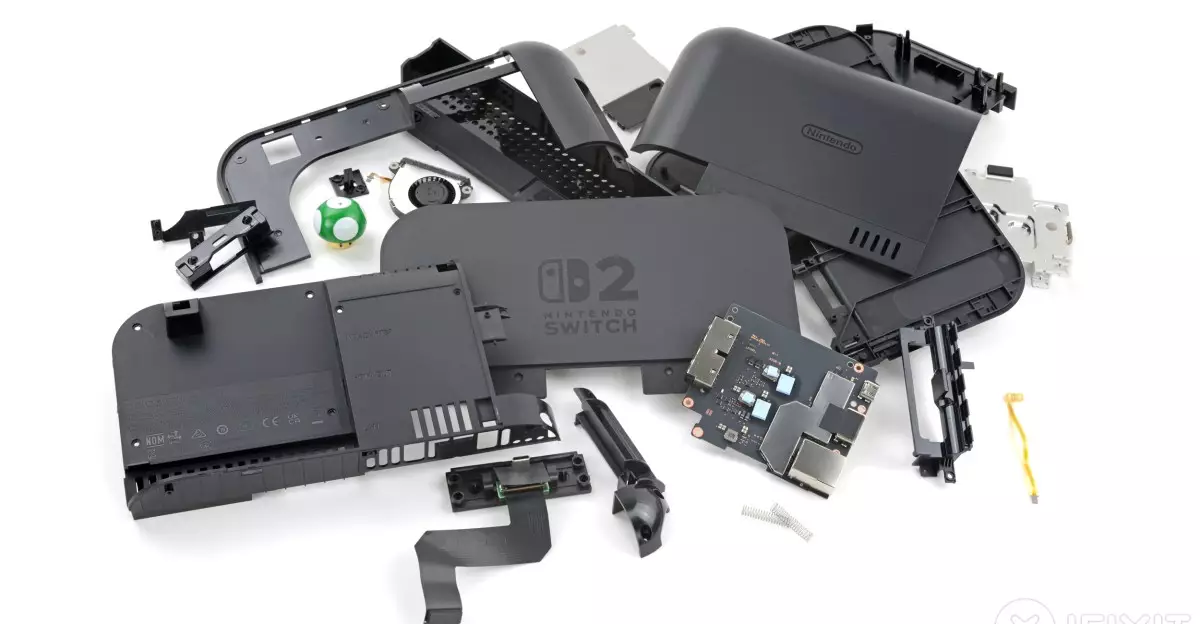As technology advances, one would expect that companies would prioritize consumer-friendly designs that promote repairability and longevity. However, this is evidently not the case with Nintendo’s latest console, the Switch 2. A thorough teardown by iFixit reveals a disturbing trend—components that have become increasingly difficult to remove and replace. It raises an important question: why is a company that has historically developed playful and engaging hardware leaning more towards sealed designs that ensure obsolescence rather than repairability?
Repairability is more than just a technical concern; it’s a significant factor for sustainability and user freedom. A higher repairability score generally indicates that a product is built with the end-user in mind. Unfortunately, after evaluating the Switch 2, iFixit gave it a dismal score of just 3 out of 10. This score reflects numerous poorly designed elements that impede user access to essential components, raising urgent issues about the future of consumer electronics.
The Adhesive Barrier
One of the most glaring problems identified was the reliance on powerful adhesives securing critical components. The battery, which should ideally be straightforward to replace, is glued in a manner that makes removal a cumbersome and almost disastrous process. The teardown notes highlight how much effort and specialized tools are needed merely to access the battery, which should not be the case in a user-centric design.
The use of adhesives rather than physical fasteners begs the question—why is Nintendo making it so difficult for users to handle component replacements? The environmental impact is concerning, as users are likely to abandon or dispose of a device that appears irreparable. With the rising focus on sustainability, one would expect companies to craft devices that encourage repair and mitigate waste. Instead, Nintendo seems to be digging its own grave—with each glued component contributing to an increasingly disposable product lifecycle.
Hidden Assembly Challenges
Hidden screws and convoluted assembly methods are further complicating matters. The presence of tri-point screws, some of which are concealed beneath stickers that become damaged upon trying to access them, is yet another barrier preventing users from performing their own repairs. Ironically, while attempting to make their consoles more secure, Nintendo is simultaneously alienating a segment of their user base which values autonomy over device manipulation.
The lack of official repair parts or manuals further compounds these issues. With Nintendo historically not issuing parts for the original Switch, users today face a similar predicament with the Switch 2. Relying on third-party alternatives places users in a challenging position—will these replacements match the quality and durability of the originals? Trusting unverified components could lead to more complications, effectively creating unending cycles of interim fixes.
Navigating Technological Ironies
There is an undeniable irony present in some of the Switch 2’s features, particularly regarding the Joy-Cons. Despite facing legitimate backlash over joystick drift issues in the previous models due to the outdated potentiometer technology, the new Joy-Cons are still difficult to disassemble. Even worse, they continue utilizing the same prone-to-wear components. With mounting criticism surrounding joystick drift, it seems unreasonable that the company would stubbornly cling to problematic technology instead of pursuing better design alternatives.
Even the thermal management in the Switch 2 poses issues. The presence of three different types of thermal paste raises red flags. Such inconsistency could lead to varied performance levels, likely exacerbating the already concerning heat management challenges that consumers face. As consoles often operate over extended periods, proper thermal regulation should be a priority. Yet, evident in this teardown, it’s clear that Nintendo’s focus appears misaligned.
An Unsustainable Path Forward
As companies like Nintendo continue down this path, gamers must reflect on the broader implications of these practices. The repairability scores represent more than just a number; they encapsulate the essence of a user-first approach that seems to be fading. While nostalgia fuels many of our allegiances to brands like Nintendo, the urgency for a sustainable future and user empowerment cannot be overstated. If giants in the gaming industry don’t begin to prioritize repairable designs and user accessibility, they could soon find themselves at odds with an increasingly conscientious consumer base.

